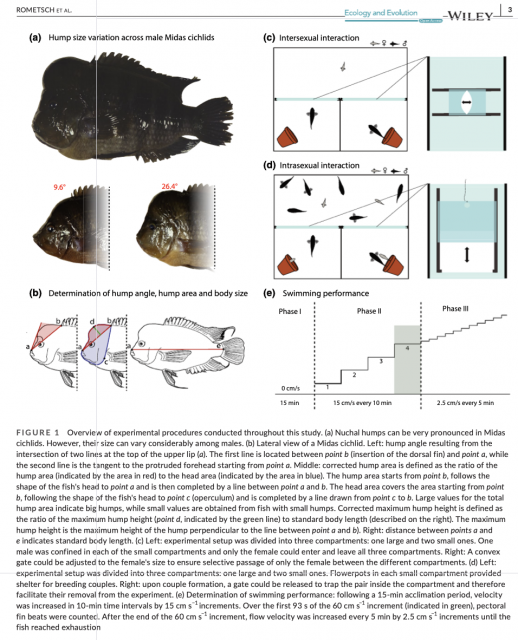From a 2012 thread I posted in this section.....
The Nuchal Hump in Amphilophus | MonsterFishKeepers.com
This subject came up recently and while this may be common knowledge to some members I thought that I would share some information from some old research papers that discuss this in fish found within the midas complex.
http://www.sciencedirect.com/science/article/pii/0016648075901367
Hormonal control of the nuchal hump in the cichlid fish Cichlasoma citrinellum
C.R. Bleick - Zoology Department, University of California, Berkeley, California 94720 USA
Abstract
A nuchal hump (forehead swelling) develops in both male and female Cichlasoma citrinellum prior to spawning, and subsides shortly after spawning. Hump development is due to edema of the modified nuchal hypodermis. Fat stored in the same tissue does not contribute to prespawning hump development, although it may cause a residual, enduring hump. Plasma water increases slightly in fish with a nuchal swelling, indicating systemic water retention. The prespawning nuchal edema resembles preovulatory sexual skin swelling in monkeys. Nuchal hump development in males is gonad dependent.
A hump could be induced with mammalian gonadotropins (HCG or ovine LH) in intact males but not in castrates. However, the steroid hormones testosterone, 11-ketotestosterone, 17β-estradiol benzoate, progesterone, hydrocortisone acetate, and aldosterone failed to induce a hump. A decline in the hump comparable to that occurring after spawning was induced by homogenate of C. citrinellum rostral pars distalis (8 r. p. d. per male fish); and a slight effect was obtained with ovine prolactin (2 daily injections of 7.5 μg/g). These results suggest that PRL secretion may inhibit the hump during the parental period.
George Barlow also discusses this subject with regards to citrinellum kept in captivity in the following paper.
http://digitalcommons.unl.edu/cgi/v...pIU6Q#search="midas cichlid nicaragua barlow"
The factors determining the presence and size of the nuchal hump are complex, but they tend to assure that maximum dimorphism occurs at the time of pair formation. A typical progression makes the point: a male with no nuchal hump is brought into the laboratory and put into a situation conducive to breeding.
Within a few days he develops a large hump. Then he is paired with a female. The
hump recedes during the one or two weeks of courtship. Sometimes it diminishes rapidly, in less than one day, just before spawning (C.R. Bleick, pers. comm.). It stays reduced through the parental phase. If the pair completes the rearing of young and commences another breeding cycle, the male does not develop a large nuchal hump this time.
But if the female is taken away at this point for a few days and is then returned, or replaced with a new female, the hump develops anew in the male. Here the elaboration of the nuchal hump is stimulated by the factors associated with thwarted sexual behavior and pair formation.
Groups of males kept without females in large tanks regularly develop enormous nuchal humps that persist. The humps on such males often become grotesque, and far exceed anything seen in nature. The behavior of these males suggests that aggressive behavior might be involved in stimulating the development of the hump. Aggressive activity is also an important aspect of courtship behavior, particularly during pair formation.










